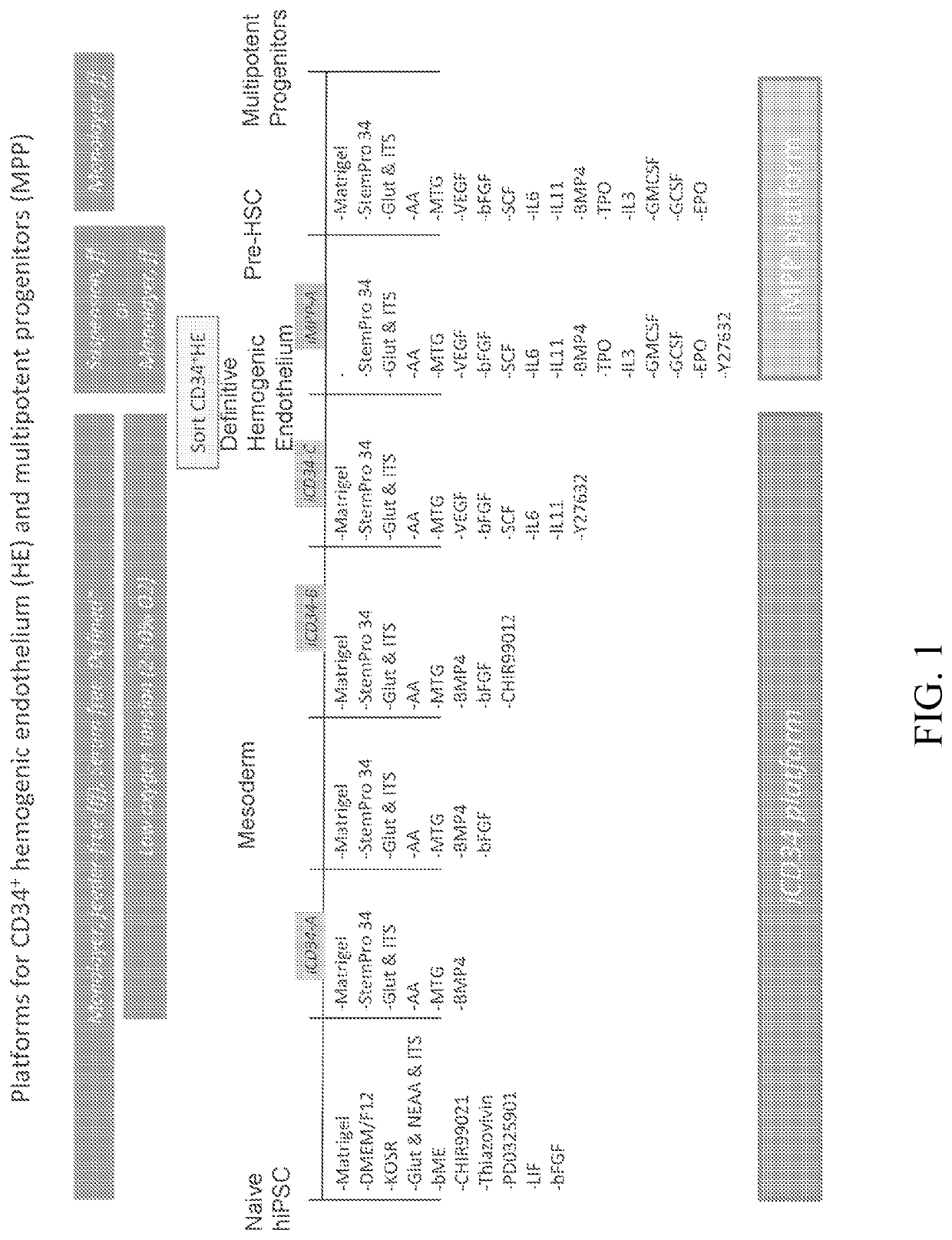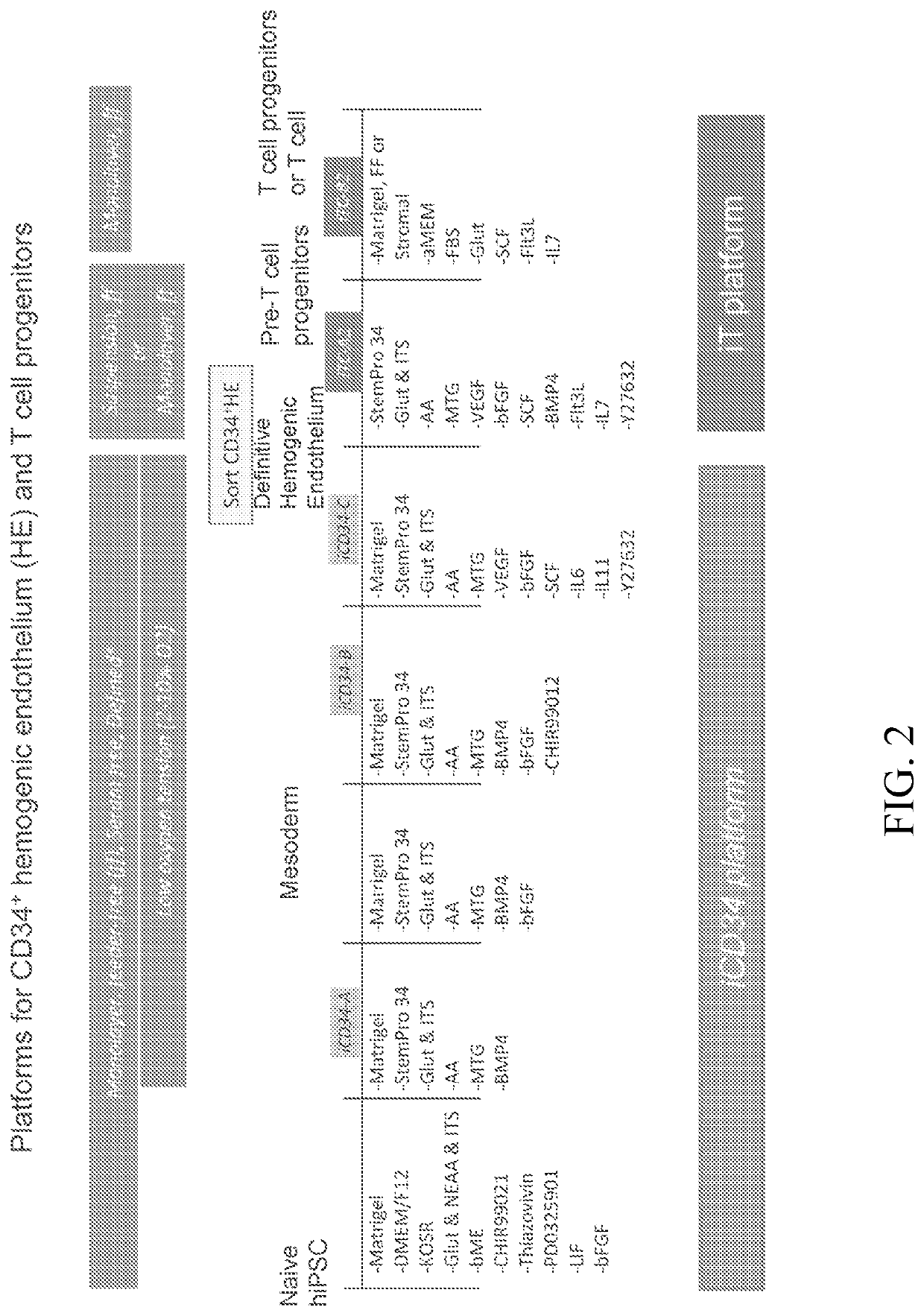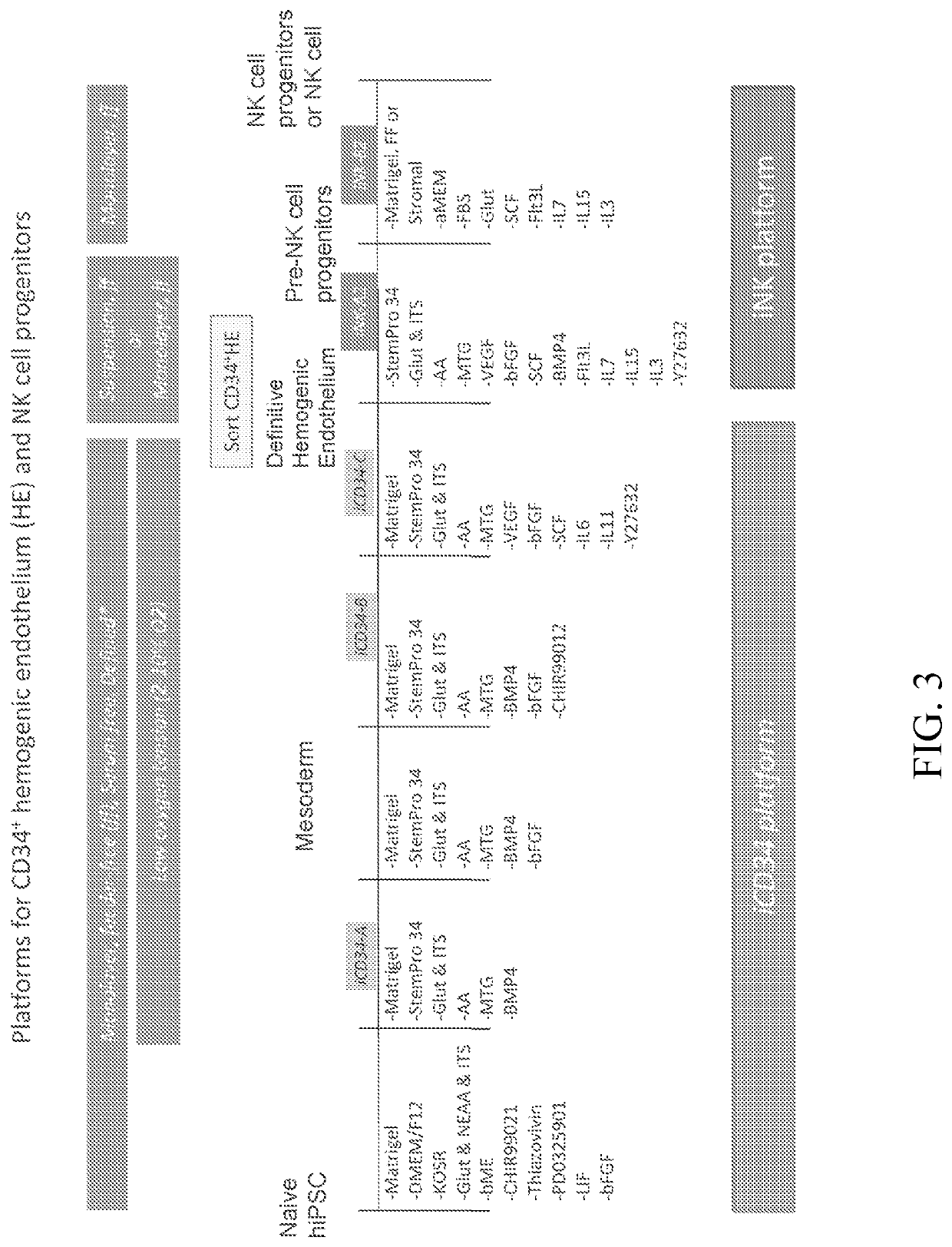Methods and compositions for inducing hematopoietic cell differentiation
a technology of hematopoietic cells and compositions, applied in drug compositions, cell culture active agents, immunological disorders, etc., can solve the problems of low efficiency and achieve the effect of high efficiency
- Summary
- Abstract
- Description
- Claims
- Application Information
AI Technical Summary
Benefits of technology
Problems solved by technology
Method used
Image
Examples
example 1
eration and Maintenance
[0348]Somatic cells including fibroblast and blood cells were induced to reprogram towards a pluripotent state using various factor combinations including, but not limited to, OCT4 / SOX2 / LargeT, OCT4 / SOX2 or OCT4 / SOX2 / NANOG / LargeT in the presence of reprogramming medium containing ROCK, MEK, GSK3 pathway and TGFβ receptor inhibitors (Valamehr et al. Sci Rep. 2012; 2: 213). Fourteen days after induction, reprogramming populations were switched to maintenance medium containing ROCK, GSK3, and MEK pathway inhibitors, basic fibroblast growth factor (bFGF), and leukemia inhibitory factor (LIF) (Valamehr et al. Stem Cell Reports 2014, 2(3): 366-381). Cells were kept indefinitely in the maintenance medium.
[0349]Approximately three weeks after induction, the reprogramming populations were sorted into individual wells of a 96-well plate. Selected clones were characterized and fully reprogrammed clones representative of naïve hiPSCs were selected for differentiation stud...
example 2
etic Differentiation Using iCD34 Culture Platform and Identification of HE Population Having Engraftment Potential
[0352]The iCD34 platform is an optimized system for hematopoietic lineage cells differentiation. To initiate differentiation towards the hematopoietic lineage, hiPSCs were seeded as a monolayer on Day (D) 0 in the maintenance medium and allowed to adhere and expand for about 24 hours. At this point, the maintenance medium was removed and replaced with base medium without maintenance factors at D1. Hematopoietic differentiation was initiated at around D2 by switching the culture medium to iCD34−A (see FIG. 1). As illustrated in FIG. 1, the culture medium was supplemented with the growth factor bFGF at D3 and switched to iCD34−B medium subsequently for differentiation. The monolayers were maintained until around D5-D6 at which point they were dissociated into single cells and seeded as a low density monolayer in iCD34−C medium until differentiation around D10. Low oxygen t...
example 3
ion of HE Generation by Small Molecule, Cytokine And Plating Density Modulation
[0355]To optimize the efficient generation of HE from hiPSCs after around 10 days of differentiation several parameters were examined. The optimal plating density of the monolayers at D0 of differentiation was assessed by plating increasing numbers of hiPSCs from 7.5×104 / well to 1.5×105 / well on Matrigel™-coated 6 well culture dishes and then analyzing the generation of the CD34+ HE population at about D10. FIG. 5A demonstrates that increasing the cellular plating density increases the total percentage of CD34+ cells but decreases the CXCR4−CD73− HE subpopulation. Despite this decrease, the highest conversion rate of hiPSCs to HE after 10 days of monolayer differentiation was at the highest plating density tested at 1.5×105 / well (FIG. 4C).
[0356]The effect of the concentration of BMP4 modulation during the initial stages of hematopoietic differentiation on the generation of HE was assessed by treating the c...
PUM
| Property | Measurement | Unit |
|---|---|---|
| time | aaaaa | aaaaa |
| period of time | aaaaa | aaaaa |
| weight | aaaaa | aaaaa |
Abstract
Description
Claims
Application Information
 Login to View More
Login to View More - R&D
- Intellectual Property
- Life Sciences
- Materials
- Tech Scout
- Unparalleled Data Quality
- Higher Quality Content
- 60% Fewer Hallucinations
Browse by: Latest US Patents, China's latest patents, Technical Efficacy Thesaurus, Application Domain, Technology Topic, Popular Technical Reports.
© 2025 PatSnap. All rights reserved.Legal|Privacy policy|Modern Slavery Act Transparency Statement|Sitemap|About US| Contact US: help@patsnap.com



